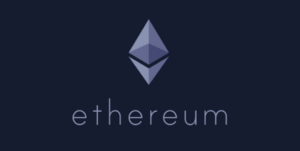New Synthetic Stablecoin Overcollateralized by Bitcoin and Ethereum Unveiled by DWF Labs

Prominent crypto market maker DWF Labs has recently completed the development of its synthetic stablecoin, which will be supported by a combination of digital assets, including Bitcoin and Ethereum.
In a post on X (formerly Twitter) on September 5, DWF Labs co-founder Andrei Grachev disclosed that the synthetic stablecoin would be overcollateralized and backed by fiat stablecoins like Tether’s USDT, Circle’s USDC, and select altcoins. Each asset will provide varying APYs to encourage community adoption.
Grachev expressed optimism that the asset would introduce significant liquidity into the market, stating, “Let’s imagine that just a part of altcoins FDV is a liquid stable again > people would trade like crazy, one more chance to capture alpha or a new gem.”
This announcement follows DWF Labs’ previous plans to enter the expanding stablecoin market, where Grachev highlighted that the digital asset would allow users to earn appealing yields without compromising flexibility.
While specific details on how DWF Labs’ stablecoin will maintain parity with the US dollar are still unclear, its launch has the potential to reinforce the rapidly growing stablecoin sector.
Stablecoins have emerged as one of the few crypto products with consistent real-world applications. Their stability enables traders to avoid the volatility of other digital assets and grants crypto users in developing economies access to US dollars.
In a contrasting development, as DWF Labs progresses with its synthetic stablecoin, Ethena’s USDe, a synthetic dollar, is experiencing a notable reduction in supply. Initially one of the fastest-growing stablecoins earlier this year, USDe has seen a slowdown in growth over the past two months, with its market capitalization decreasing from $3.61 billion on July 4 to $2.69 billion, according to CryptoSlate’s data.
Market observers attribute USDe’s challenges to heightened competition in the yield-generating stablecoin sector. For example, PayPal’s PYUSD has gained traction on Solana due to substantial incentives across various DeFi protocols offering double-digit returns to investors.
Conversely, Ethena’s once-high APY has dropped to just 4.3%, leading to significant redemptions from crypto investors seeking higher yields.
In conclusion, the crypto market is witnessing dynamic shifts in the stablecoin sector, with new developments such as DWF Labs’ synthetic stablecoin introduction and the challenges faced by existing players like Ethena’s USDe, reflecting the evolving landscape of digital assets and their applications.

